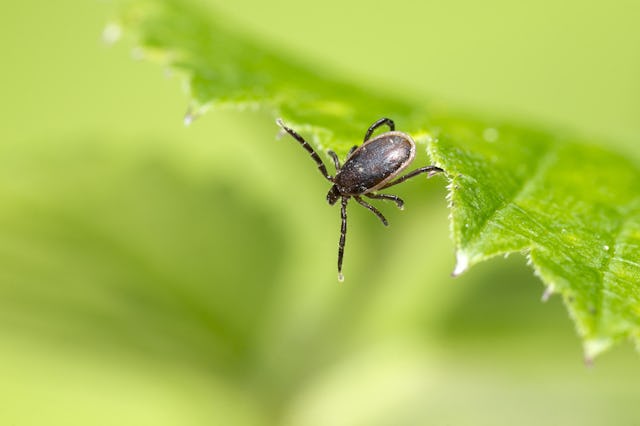A Lyme Disease Vaccine Is One Step Closer To Reality
If it is found effective and if approved by the FDA, the vaccine would protect anyone over 5 years old.

As infected black-legged deer ticks have spread further and further across the country over the past few decades, more and more parents have had to deal with Lyme disease — worrying about their kids playing outside, doing checks for ticks, and making certain their kids stay healthy if infected.
But now a possible new tool to fight the bacteria-caused disease is on the horizon, even if it may take a few more years to actually debut. Scientists have just embarked on a final clinical trial for a Lyme disease vaccine called VLA15, which will protects people five years old and up, and which will hopefully be available for use sometime around 2025.
More: What Every Parent Needs To Know About Lyme Disease
"We are extremely pleased to reach this important milestone in the development of VLA15," Valneva's chief medical officer, Juan Carlos Jaramillo, said in a statement. "Lyme disease continues to spread, representing a high unmet medical need that impacts the lives of many in the Northern Hemisphere."
The third round of the VLA15 trial has just begun in the United States, focusing on 6,000 people who live in areas where Lyme disease is endemic. Researchers hope that this human trial garners results predicted by the first two rounds and results in a useable and safe drug. Each person will receive three shots of the vaccine over a short period of time, then one booster shot a year later.
The history of Lyme disease vaccinations is fraught. Twenty years ago, a vaccine called LYMERix was available, but claims of adverse side effects like arthritis — which the FDA said were unfounded — and a low-ish 75% rate of effectiveness, led its manufacturer to discontinue the drug. At the same time, 20 years ago Lyme was not as widespread as it is now and the medical world was not as aware of its long-term effects.
“There wasn’t such a recognition, I think, of the severity of Lyme disease” and how many people it affects the last time around, Pfizer vaccine chief Annaliesa Anderson told The Associated Press.
The new vaccine, which is being developed by drug makers Pfizer and Valneva, works in a similar way that the old one did, but this one is designed in a way that should avoid the pitfalls of the last solution. It should not result in joint pain and it will cover six different strains of Lyme, in comparison to protection against just one strain like the old one.
Lyme disease is carried by deer and mice who in turn carry tiny black-legged ticks that are as big as a pin head. If a human is bitten by a tick, they may be infected by bacteria that cause flu-like fever and headache symptoms as well as a bull’s-eye rash on the skin. If not treated aggressively with antibiotics, the disease can spread and enter later stages, which can cause chronic pain, joint issues, fatigue, and inflammation of the brain and spinal cord.
According to the The Centers for Disease Control and Prevention, almost a half-million Americans are treated for Lyme disease each year.
The best ways to prevent Lyme disease currently include staying on trails when outdoors, wearing long pants, socks and sleeves when in the woods, checking carefully for tiny ticks after outdoor activities, and looking out for rashes and other signs if you live in tick areas.